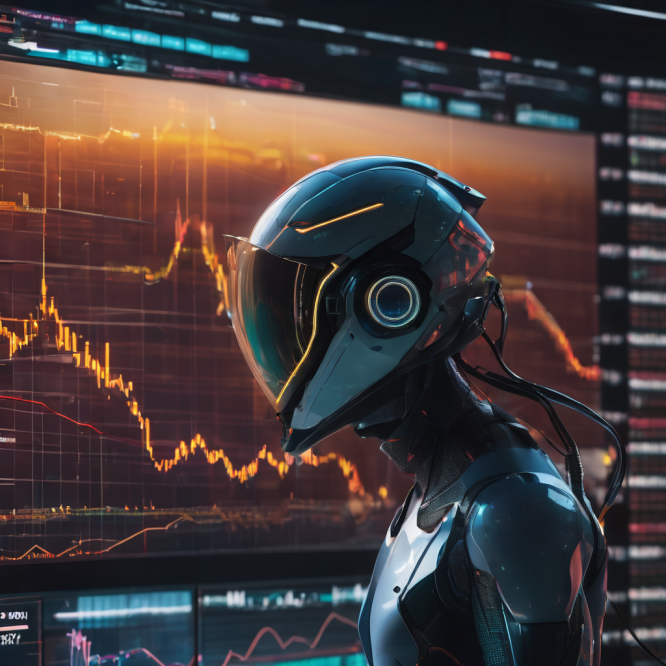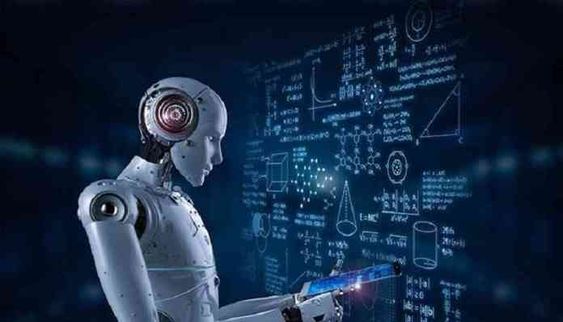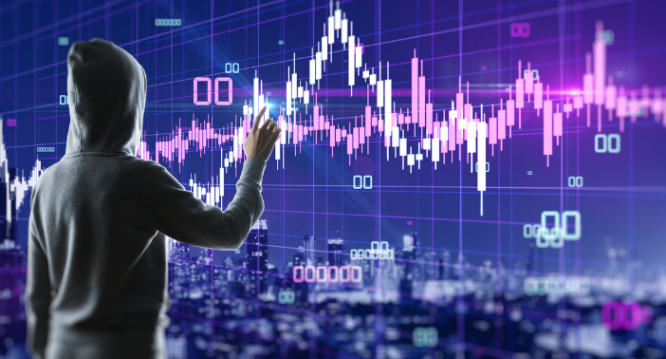What is Algo trading? (meaning, algo trading benefits and more)
Algo Trading Specifics
What is meant by Algo trading?
Algo trading, or algorithmic trading, is the use of computer programs to automatically execute trades in financial markets based on predefined rules or strategies. These algorithms analyze market data and make trading decisions at high speeds, often faster than a human could. The goal is to take advantage of small price movements in the market, allowing for efficient and emotion-free trading.
Start Algo Trading for Free (Free Demo)
Important points
• Algorithmic trading is a market strategy that combines computer programming and financial markets in order to execute transactions at precise times.
• The goal of algorithmic trading is to remove emotions from transactions, which guarantees the most effective execution of a trade, places orders immediately, and has the potential to reduce trading expenses.
• Common trading methods include trend-following tactics, arbitrage possibilities, and index fund rebalancing. Trading algorithms can be executed using strategies such as trading volume, known as the volume-weighted average price (VWAP), or based on time, referred to as the time-weighted average price (TWAP). These approaches are examples of algorithmic trading.
• In order to get started with algorithmic trading, you need to have access to a computer, access to a network, knowledge of the financial market, and the ability to code.

How Algo Trading Works?
Assume a trader fulfills these fundamental trading criteria: When the 50-day moving average of a firm is higher than the 200-day moving average, you should purchase fifty shares of that company. An average of past data points is known as a moving average.
This kind of average is used to smooth out daily price swings and, as a result, identify patterns. Through the utilization of these two straightforward instructions, a computer program will automatically monitor the stock price (along with the moving average indicators) and place buy and sell orders whenever the conditions that have been specified are satisfied.
The trader no longer needs to monitor live prices and graphs, or manually enter orders. The algorithmic trading system does this automatically by precisely spotting the trading opportunity.

Advantages and Disadvantages of Algo Trading:
Algo Trading benefits
The following are some of the advantages of algo trading:
• Best Execution: Trades are typically carried out at the most favorable prices available.
• Low Latency: The placement of trade orders is both quick and accurate (because there is a high probability that they will be executed at the levels that were targeted). The timing of trades is carefully considered and executed swiftly in order to avoid significant price fluctuations.
• Lower transaction expenses.
• Simultaneous automated examinations under diverse market scenarios. During the process of placing trades, there is a decreased likelihood of errors or mistakes being made by humans. It also disproves the notion that human traders are susceptible to being influenced by psychological and emotional variables.
• Backtesting: In order to determine whether or not algorithmic trading is a viable trading strategy, it is possible to backtest it by considering both historical and real-time data.
Algo Trading Disadvantages
The following are some of the disadvantages of algo trading:
• Algorithmic trading is dependent on high execution speeds and low latency, which refers to the amount of time that passes between the execution of a deal and its completion. If a deal is not performed swiftly enough, it may result in lost chances or losses.
• Black Swan Events: While algorithmic trading relies on historical data and mathematical models to predict market movements, it can't account for unexpected market disruptions, known as black swan events. These unforeseen occurrences can lead to significant losses for traders using algorithms.
· Dependence on Technology: The success of algorithmic trading hinges on high-speed technology, including robust computer programs and fast internet connections. Technical glitches or failures can disrupt trading operations, potentially leading to financial losses.
· Market Impact: Large algorithmic trades can influence market prices, sometimes causing losses for traders unable to adapt quickly. Additionally, algo trading has been criticized for increasing market volatility, occasionally contributing to events like flash crashes.
• Compliance with the various regulatory standards and monitoring that are applicable to algorithmic trading can be challenging and time-consuming. This is because algorithmic trading is subject to these standards.
• High Capital Costs: Building and setting up algorithmic trading systems can be expensive, with ongoing costs for software and data feeds adding to the financial burden.
• Limited Customization: Because algorithmic trading systems are based on pre-defined rules and instructions, it may be difficult for traders to tailor their trades to meet their own needs or preferences. This may be a limitation of the system.
• The absence of human judgment: Because algorithmic trading is based on mathematical models and historical data, it does not take into account the subjective and qualitative factors that can influence market movements. This is a significant limitation of algorithmic trading software. This absence of human judgment might be a disadvantage for traders who prefer a more intuitive or instinctual approach to trading.

Algo-Trading Time Scales
In today's world, a significant portion of automated trading is high-frequency trading (HFT), which seeks to make a profit by placing a large number of orders at rapid rates across multiple markets and a variety of decision factors based on preprogrammed instructions.
•Algo-trading is used by mid- to long-term investors, such as pension funds, mutual funds, and insurance companies, to make large stock purchases without influencing stock prices.
•It is much more efficient for systematic traders, such as trend followers, hedge funds, or pairs traders (a market-neutral trading strategy that matches a long position with a short position in a pair of highly correlated instruments such as two stocks, exchange-traded funds (ETFs), or currencies) to program their trading rules and let the program trade automatically. Systematic traders are also known as trend followers.
•Algorithmic trading delivers a more systematic approach to active trading than systems depending on trader intuition or instinct.

Algo Trading Strategies
The discovery of a lucrative opportunity, whether it be in terms of improved revenues or cost savings, is a must for every algorithmic trading approach. The following are popular trading methods used in algorithmic trading:
1. Trend-following Strategies Strategy
The most prevalent algorithmic trading methods are based on trends in moving averages, channel breakouts, price level fluctuations, and other technical indicators. These strategies are used to trade cryptocurrencies. These are the easiest and simplest approaches to employ utilizing algorithmic trading as they do not require any predictions or price estimates. Instead of delving into the complexities of predictive analysis, trades are initiated based on the occurrence of favorable trends, which can be applied in a relatively short amount of time and with little difficulty by utilizing algorithms. Using 50- and 200-day moving averages is a classic trend-following method.
2. Positions Available for Arbitrage
Buying a dual-listed stock at a lower price in one market and concurrently selling it at a higher price in another market gives the price disparity as risk-free profit or arbitrage. Due to the fact that there are price differences between stocks and futures instruments on occasion, the identical process might be repeated for both types of products. It is possible to generate profitable opportunities by putting into action an algorithm that can identify this kind of price differential and successfully place orders.
3. Index Fund Rebalancing
It is common practice for index funds to rebalance their holdings at predetermined intervals in order to bring them into alignment with their respective benchmark indexes. This results in advantageous opportunities for algorithmic traders, who take advantage of projected transactions that give a profit of twenty to eighty basis points, depending on the number of stocks that are included in the index fund right before it is rebalanced. Such deals are launched by algorithmic trading algorithms for quick execution and the best pricing. The ability to execute high-frequency transactions is presented to traders via algorithmic trading. The speed of high-frequency trading was formerly measured in milliseconds. Today, they may be measured in microseconds or nanoseconds.
4. Mathematical Model-Based Strategies
The ability to trade on a mix of options and underlying stocks is made possible by mathematical models that have been shown to be effective, such as the delta-neutral trading technique. (A portfolio strategy known as delta neutral is one that consists of multiple positions with positive and negative deltas that are offset by one another. Delta neutrality is a ratio that compares the change in the price of an asset, which is typically a marketable security, to the corresponding change in the price of its derivative.) The goal of this strategy is to ensure that the overall delta of the assets in question is zero.
5. Mean reversion
A mean reversion strategy operates on the idea that an asset's high and low prices are temporary and will eventually return to their average value. By defining a price range and implementing an algorithm based on that range, trades can be automatically executed whenever the asset's price moves within or outside the established boundaries.
6. (VWAP) Volume weighted average price.
The volume-weighted average price strategy breaks down a large order into smaller chunks that are dynamically determined and released to the market based on stock-specific historical volume profiles. This strategy is used to determine the price of the stock. The goal is to execute the order close to the volume-weighted average price (VWAP).
7. Time Weighted Average Price (TWAP)
The time-weighted average pricing approach separates a major order into smaller portions that are dynamically computed and distributed to the market in regularly spaced time intervals between a start and completion time. The goal is to execute the order near the average price between the start and end times, minimizing market impact.
8. Percentage Of Volume (POV)
Until the trade order is fully filled, this algorithm continues to send partial orders based on the defined participation ratio and trading volume. The associated "steps strategy" sends orders at a user-defined percentage of market volume and adjusts this participation rate when the stock price hits user-defined thresholds.
9. Implementation Shortfall
The implementation shortfall strategy seeks to reduce the execution cost of an order by trading off the real-time market, saving on the order cost while benefiting from the opportunity cost of delayed execution. The strategy will improve the intended participation rate when the stock price moves positively and reduce it when the stock price moves badly.

Beyond the Usual Trading Algorithms
There are a few particular types of algorithms that try to detect "happenings" on the opposite side. These “sniffing algorithms”—used, for example, by a sell-side market maker—have the built-in intelligence to identify the existence of any algorithms on the purchase side of a massive transaction. This kind of identification, which is accomplished via the use of algorithms, would enable the market maker to discover enormous order possibilities and would enable them to profit by fulfilling the orders at a more favourable price. This is sometimes identified as high-tech front-running. The Financial Industry Regulatory Authority (FINRA) is responsible for enforcing the rigorous regulations that govern front-running, which may or may not be deemed criminal depending on the given circumstances.
Technical requirements for algo trading.
Implementing the algorithm via the use of a computer program is the last phase in algorithmic trading, which is then followed by backtesting your decisions. However, the challenge is in transforming the outlined strategy into an integrated automated system that provides access to a trading account for the purpose of placing orders. The criteria for algorithmic trading are as follows:
• Expertise in computer programming to effectively develop the right trading strategy, the employment of programmers, or the use of pre-made trading software.
•The process of connecting to a network and placing orders via several trading platforms.
• The ability to access market data sources that will be analyzed by the algorithm to determine the likelihood of purchasing items.
•The capability and infrastructure to thoroughly backtest the system before deploying it in real markets.
•It is dependent on the intricacy of the rules that are included into the algorithm whether or not historical data is available for backtesting.
Algo Trading Example
In addition to being listed on the Zeta Stock Exchange (ZSE), AlphaTech Inc. (ATI) is also listed on the Omega Exchange (OEX). Initially, we will design an algorithm to locate potential arbitrage opportunities. Here are some noteworthy observations:
OEX deals in euros, whereas the Zeta Stock Exchange deals in British pounds sterling.Due to the one-hour time difference, OEX begins an hour earlier than ZSE, followed by both exchanges trading concurrently for the next several hours and then trading solely in ZSE for the final hour when OEX shuts.
Can we look at the likelihood of arbitrage trading on the AlphaTech shares, which are listed on these two markets in separate currencies?
Prerequisites
A computer program for reading current market prices.Price feeds from both ZSE and OEX.A forex rate feed for GBP-EUR.The placing of orders and their placement on the relevant exchange are both automated.Backtesting capabilities on past pricing streams.
Algorithm Functionality
The computer program should perform the following:
Read Stock Prices: Read the ATI stock price feed from both exchanges.
Currency Conversion: To convert the price of one currency to the price of another currency, use the current international exchange rates.
Identify Price Differences: If there is a significant price difference (excluding brokerage costs), the program should buy on the lower-priced exchange and sell on the higher-priced exchange to maximize profits.
Execute Orders: If the orders are executed as planned, the arbitrage benefit will follow.
Challenges in Algo Trading
Simple and easy! Nevertheless, the process of algorithmic trading is not as simple to manage and put into effect as one would think. Remember that if one investor can execute an algorithm-generated deal, so can other market players. As a consequence of this, prices can fluctuate from milliseconds to even microseconds.
In the above example, what happens if a buy transaction is performed but a sell trade is not executed because the sale prices have changed by the time the order reaches the market? In this case, the trader will be left with an open position, rendering the arbitrage strategy ineffective.
There are additional risks and obstacles, such as system failure hazards, network connection issues, time-lags between trade orders and execution, and, most importantly, poorly designed algorithms. The more sophisticated an algorithm, the more severe backtesting is required before it is put into operation.
Is Algo Trading Legal?
Trading based on algorithms is, in fact, legal. There are no restrictions or legislation that prohibit the use of trading algorithms. It's possible that some investors will argue that this type of trading creates an unfair trading environment that has a negative impact on markets. On the other hand, there is nothing questionable about it.
How Can I Become Skilled in Algo Trading?
The use of quantitative analysis and simulation is the primary foundation upon which algorithmic trading is built. On account of the fact that you will be investing in the stock market, you will need to have prior experience or knowledge of trading in relation to financial markets. In conclusion, given that algorithmic trading is often dependent on technology and computers, it is quite probable that you will need prior knowledge in coding or programming.
Should You Consider Using Algo Trading to Make Money?
There is potential for profit in algorithmic trading. A more methodical and disciplined approach to trading may be provided by algorithmic trading, which can assist traders in recognizing and carrying out deals in a more effective manner than a human trader could. Algorithmic trading can also help traders to execute trades at the best possible prices and to avoid the impact of human emotions on trading decisions.
However, it is crucial to realize that algorithmic trading has the same dangers and uncertainties as any other kind of trading, and traders may still incur losses even using an algorithmic trading system. Furthermore, the development and implementation of an algorithmic trading system is often prohibitively costly, which puts it out of reach for the majority of normal traders. Additionally, traders may be expected to pay recurrent fees for software and data feeds. Before making any decisions, it is essential to do thorough research and have a thorough understanding of the potential risks and advantages associated with any form of investment being considered.
Which programming language is utilized by algorithmic traders?
A significant number of algorithmic traders choose C++ as their programming language of choice because of the incredible efficiency with which it manages massive volumes of data. On the other hand, C and C++ are both more complex and difficult languages. As a result, financial professionals who are interested in beginning their programming careers might be better off switching to a language that is easier to work with, such as Python.
To sum up
Algo trading brings together computer software, and financial markets to initiate and settle deals based on programmed code. Traders and investors have the ability to determine when they want trades to be opened or closed. They can also use computing power to execute high-frequency trades. It is now common practice in the financial markets to engage in algorithmic trading, which gives traders the ability to employ a variety of trading strategies. To begin, you need get yourself ready by acquiring computer hardware, programming abilities, and knowledge in the financial market.

